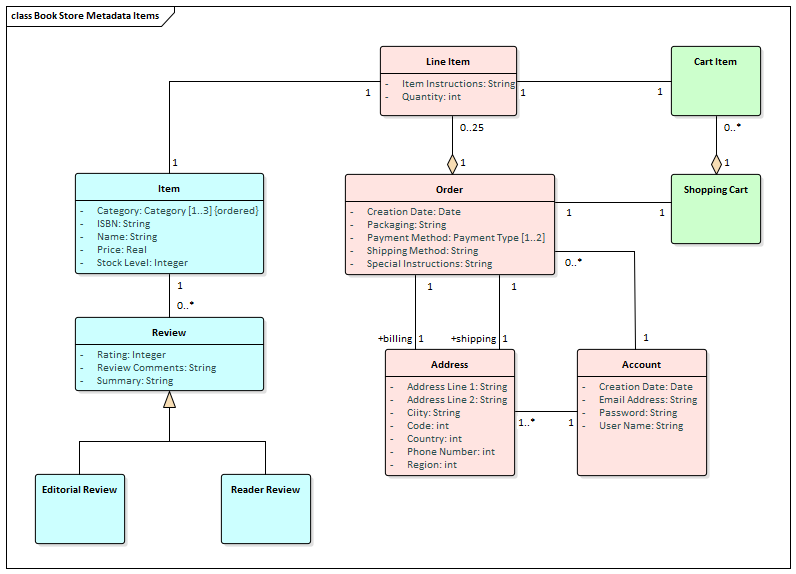| Prev | Next |
Data Dictionary
A data dictionary, or metadata repository as it is sometime called, is used to define a standard definition of data elements so that stakeholders can use and apply the data elements consistently and these can be shared by a number of solutions. These data elements are often stored in a spreadsheet, word processing tool or even a purpose built meta-data repository. With Enterprise Architect, the definitions can be stored in the same repository as the solutions and can be referenced by all stakeholders, including business and technical roles. A data dictionary can be created that defines data elements, including details such as names, aliases descriptions and allowable values, and including whether multiple values are permissible. There is also the ability to create examples of usage (Class Instances) that are derived from the definition, which can help some stakeholders understand the element defined in the dictionary.

This section lists the main tools available in Enterprise Architect that can be used to perform this business analysis technique. There is also a wide range of additional tools that a modeler might find suitable when applying the technique in a particular context. The complete list of tools is available from the topic Business Modeling Tools.
Class Diagram
A Class diagram can be used to model important data elements in the domain. The elements are modeled using UML Classes, and Names, Aliases, Descriptions and details such as Attributes can be entered for each Class. The elements can be related to each other using relationships such as Association and Generalization. These elements can then be used throughout the model as a data dictionary, including in element notes where they can be referenced.
Learn More: Class Diagram
Database Builder
The Database Builder can be used to create a Data Dictionary. The elements are modeled as Tables and Names, Aliases, Descriptions and other details such as Attributes can be entered for each table. The Attributes can be given Names and Descriptions and other details such as the number of allowable values can be defined.
Learn More: Database Builder
Entity Relationship Diagram
An Entity Relationship diagram can be used to define the elements of a Data Dictionary. There are a number of different representations that can be used but the style used in Enterprise Architect uses rectangles to represent Entities, ellipses to represent Attributes and diamonds to represent connections between Entities.
Learn More: Entity Relationship Diagram
Documentation
Enterprise Architect has a powerful and flexible documentation generator that can produce Docx and RTF Word Processor files, PDF and HTML reports. The elements defined in the data dictionary can be conveniently generated and included in documentation. This includes the element Name, Alias, Description, Type and a variety of other information including Attributes, Tagged Values and Connections with other elements. A sophisticated template facility exists that provides a range of in-built templates and allows the user to create their own, defining styles, images and a wide range of other formatting options.
Learn More: Documentation

